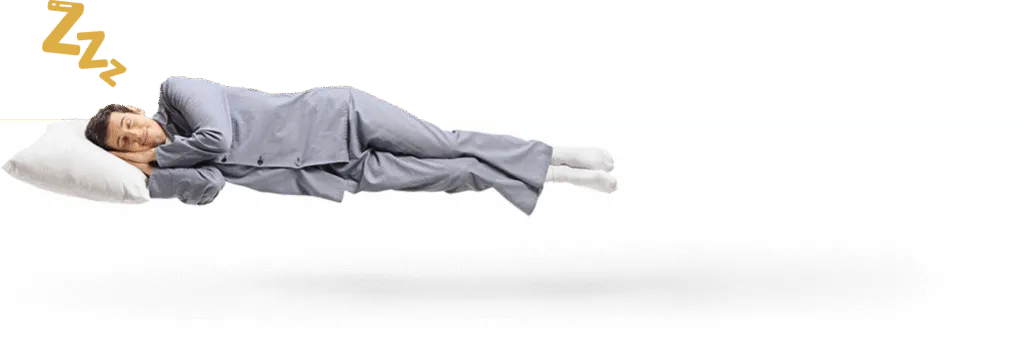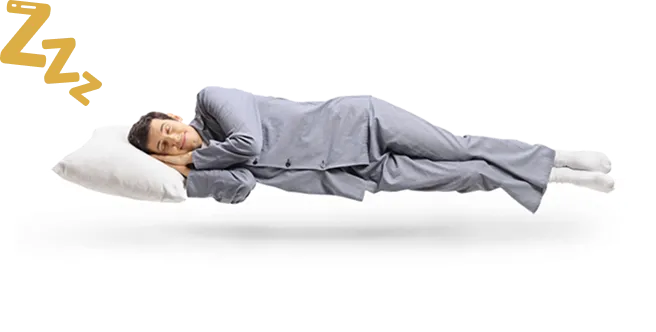Mattress for large bodyweights
Hello, John and Ryan.
On the subject of pocket springs...
my wife and I are each about 16st, and want to buy a new king size bed plus mattress.
(Also, I guess there will be a topper in there somewhere, since you emphasise the importance of this).
Obviously, it's a minefield out there, and buying a new bed raises loads of questions.
Please forgive the style, but it will be easier if I bullet point my questions..
.
Hi again Keith.
This is supplementary to your previous comment [Read Here].
1).
We are thinking of using a sprung slatted base, (because we've seen a really nice looking beadstead), with a pocket-sprung mattress.
Is this advisable, or should we only consider using a sprung divan under the mattress?
I am assuming you are keeping the mattress you bought - Sleepeezee Backcare (or have I mis-read) and if so there is no real reason to opt for any particular base.
Ideally though, pocket sprung mattresses work well with a sprung edge divan base.
They offer the flat surface it (the mattress) likes and also offers the greatest level of suspension.
I note that you already have a Dunlopillo base which in my mind seems quite adequate for the time being.
2).
Am I right in thinking that the smaller diameter / greater number of springs across the surface of the bed, then the more refined the support will be?
Yes and No.
Depends on a significant number of factors.
The most important being the actual gauge of the wire used to make the spring - 2000 firm (heavy gauge wire) will be less forgiving than 1000 soft (lesser gauge wire).
You will also have to take into account the weight of the users and what their requirements are.
This is a very tricky question with no real right answer.
Upholstery will also play a part in how the mattress will feel and so springs alone cannot be a sole factor of choice or decision.
3).
Is there any benefit when a manufacturer uses two layers of half-length springs, compared to using one layer of full length springs?
Although technically, this doubles the spring count, I assume that the spring - rate (ie lbs per inch compressed) and the diameter of the springs is the same in each case...
in which case, surely the spring density and springyness of the mattresses would be identical!
For this response you have to acknowledge that it depends on the actual mattress.
For example, on Vi Springs top end of their range they do utilise the double layer spring construction.
But, they do have the option of offering different spring gauges relevant to the end user.
On mass produced mattresses this option of varying spring gauges is not usually an available option and a 'one spring tension fits all' would give a completely different feel.
Taking this question in general terms, our theory is that a double layer of springs is the better option.
A spring manufacturer once explained that as the top spring depresses under duress, the mechanics of the lower spring 'kicks in' before the top spring becomes fully depressed.
As a further example of this you could look at how Harrisons explain the mechanics of their Revolution Spring in Spring system.
As the larger outer spring is depressed, the smaller inner spring takes the strain of the weight applied.
Despite the simplicity of your question, it is not really that possible to give an equally simplistic answer.
It is an extremely interesting question tho' and I would relish the views of other people especially those with an engineering background to discuss this theory.
4).
We have seen a range of Harrison beds locally, and I have their brochure, and I have also read a few comments on your website about these.
What do you think about their HD and Posturefil spring systems?
and the "spring-in-spring" Revolution main springs?
I personally like the usage of micro/ mini springs but not in such a level whereby it is at the expense of upholstery.
The only difference (rightly or wrongly) between manufacturers is how they develop and utilse the support element of the mattress (springs).
As explained above and elsewhere, you have to look at the mattress in two separate elements - Support (Springs) AND comfort (Upholstery).
To base your decision on one element alone will not work.
This is not to say that one technique is better than the other, but it has to be taken into consideration.
Will a ten stone bodyweight require the same support as a 16st bodyweight?
No.
So the actual number of springs in a mattress does not equate to a 'better' or more comfortable mattress.
Once again Keith, an interesting question worthy of discussion and no doubt there will be several equally valid points of view.
In one of your comments, comparing Harrisons with Vi Spring, you noted that Harrisons do not advertise the amount of fill materials in their products.
A very interesting observation.
Possibly their filling content is relatively low, but if I am guessing correctly, I imagine that the HD and Posturefil items are supposed to offer comfort rather than support, and if so, wouldn't these retain elasticity (return to shape) far better than wadding?
If you were using an additional topper, would any deficit in wadding, but addition of these smaller springs be a good or a bad thing?
Absolutely.
However...
once again (is this a good or bad thing?) there is no right or wrong answer.
I always draw on the Spink and Edgar top of range Empire mattress with 21700 springs as an example.
The core of this mattress utilises the Revolution system topped off with multi sheets of HD mini / micro springs.
Now (and this is only my theory) will the Revolution springs work as intended if the bodyweight applied has to go through 1.
the upholstery, and 2.
the multi layers of HD springs?
Secondly, now using Vi Spring as the example, just laying a blanket on top of their spring system (calico encased pocket springs) will also offer a supremely level of comfort.
Vi Spring utilises multi layers of upholstery which brings me back to my response of there is no real right or wrong answer.
Each manufacturer will quite rightly stand by their own methods of construction and obviously state that their method is the best.
Again Keith, too big a question to answer without a secondary point of view.
5).
Would it be far better to use a cheaper mattress (with say, 2000 pocket springs but with very little wadding) just to get the necessary support, and to add the comfort layers by using one or two toppers?
(rather than buying a really expensive mattress, having a similar set of materials but all in one case ?) In my view Yes.
Obviously it is better the mattress is as well built as your budget allows but certainly the addition of toppers to suit your requirements precisely is a better option than expecting a mattress to tick all your boxes from the start.
In any case, all mattresses will require a topper for a multitude of reasons as described throughly throughout this site.
Well, that's a lot to ask, but we have had a Vi Spring Herald, which rapidly bulged into a lozenge shape and also went lumpy; a Dunlopillo which was great, until it became permanently squashed in places, and also a Hypnos, which developed a hollow on one side !
Thanks again for a brilliant web site, and for any answers you can give.
Kind regards.
Keith Excellent questions Keith.
Thoroughly enjoyed this one.
I hope this demonstrates the complexities of what you would deem to be such a simple purchase.
The responses above are our opinions and please don't take them Carte Blanch to be the 'right' answers.
It is necessary to get other peoples point of view and then come to your own conclusion as to what the right answer for you will be.
Very enjoyable.
John and Ryan.

Dreaming of the perfect nights sleep?

Newsletter
Enter your email to join our newsletter. We’ll send you occasional news and mattress expertise.
